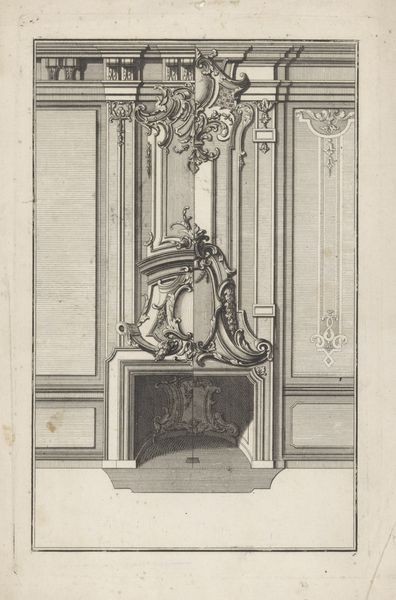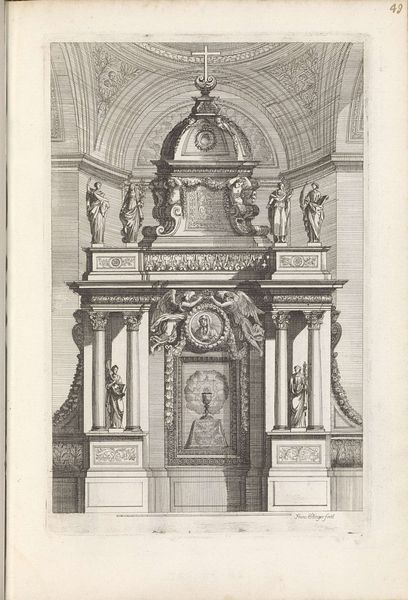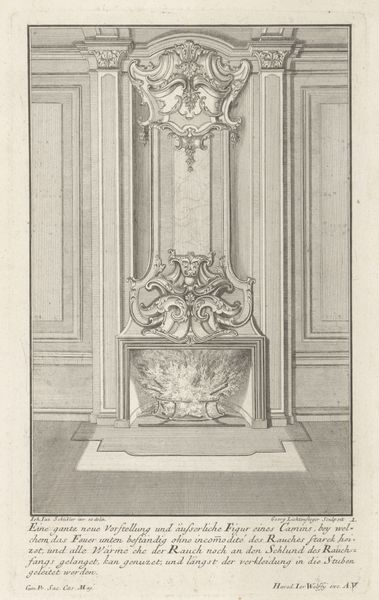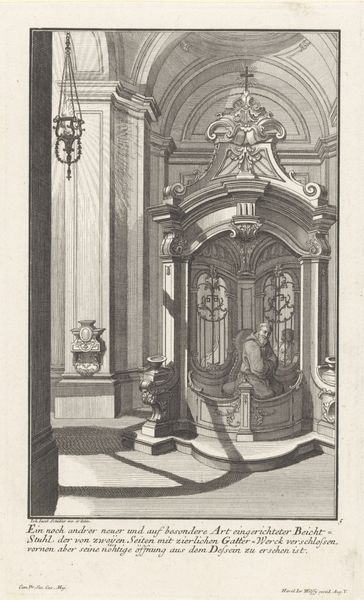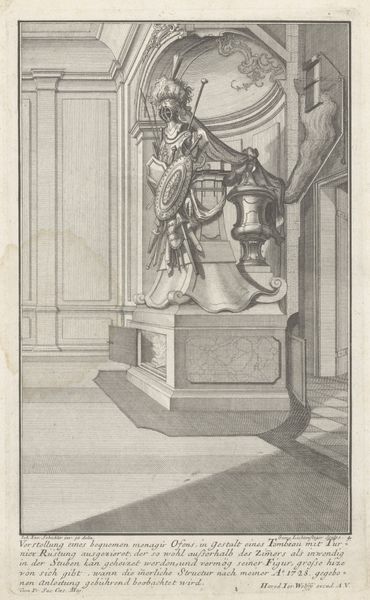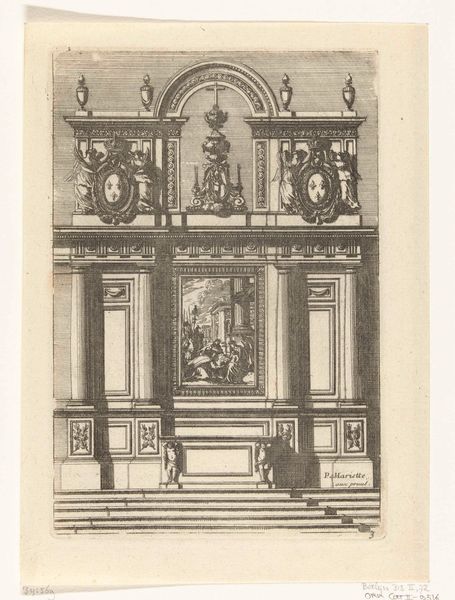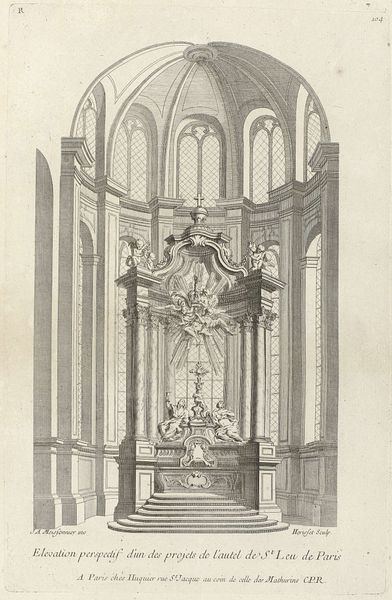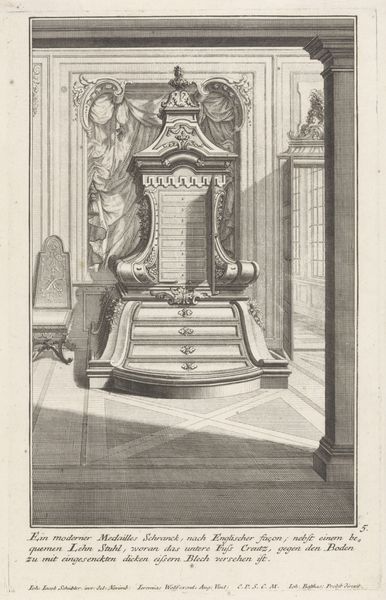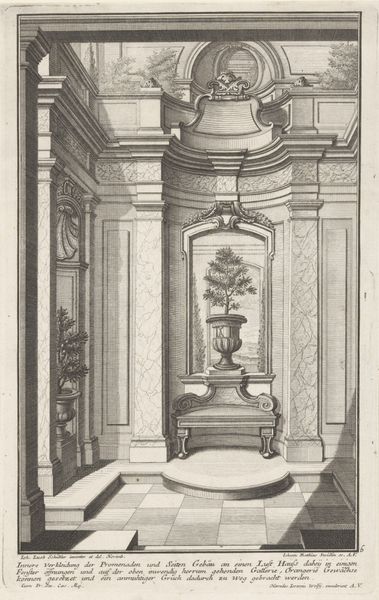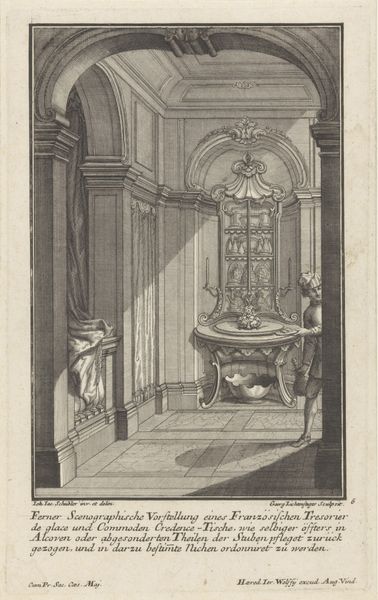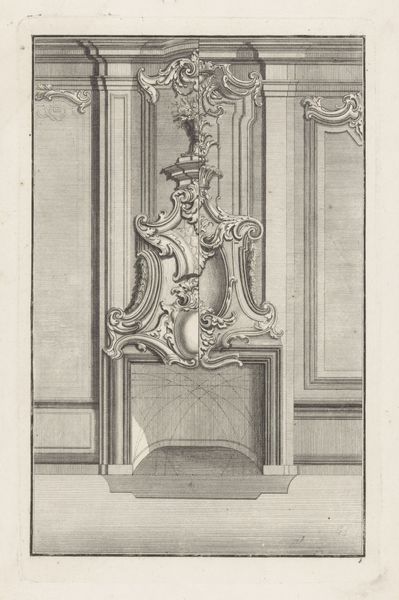
drawing, print, etching, intaglio, engraving, architecture
#
drawing
#
baroque
# print
#
etching
#
intaglio
#
old engraving style
#
geometric
#
line
#
history-painting
#
engraving
#
architecture
Dimensions: height 295 mm, width 180 mm
Copyright: Rijks Museum: Open Domain
Editor: Here we have "Geornamenteerde biechtstoel," or "Ornamented Confessional," an etching by Georg Lichtensteger from after 1724, housed at the Rijksmuseum. It feels very theatrical, like a stage set. What leaps out at you when you look at this print? Curator: The theatricality is a great observation. The dramatic flair of the Baroque is evident, isn’t it? But beyond the ornamentation, I see a commentary on power and privacy. Think about it: a confessional, a space for intimate disclosure, rendered with such architectural grandeur! Does that strike you as contradictory, almost humorous? Editor: A little, yeah! It seems so...extra. Like, shouldn't confession be humble? What was the intent here, do you think? Curator: Well, consider the period. The Baroque loved excess, a kind of visual feast intended to inspire awe. But also, confession during this era was heavily ritualized. The print might be highlighting the Church's authority, visually reinforcing the importance of the sacrament. Or maybe, it's gently mocking the opulence of religious institutions? I’d say it's definitely more playful than pious. What kind of mood does the image leave *you* with? Editor: Hmm, playful is a good word! It definitely feels less somber than I'd expect. I appreciate how Lichtensteger balanced the seriousness of the subject with, like you said, that little wink. Curator: Exactly! And isn't it wonderful how a seemingly simple etching can hold so many layers? I think this made me think more about how confessionals can be both very intimate and a performance. Editor: I totally agree! I learned so much about considering the different layers of intent!
Comments
No comments
Be the first to comment and join the conversation on the ultimate creative platform.
